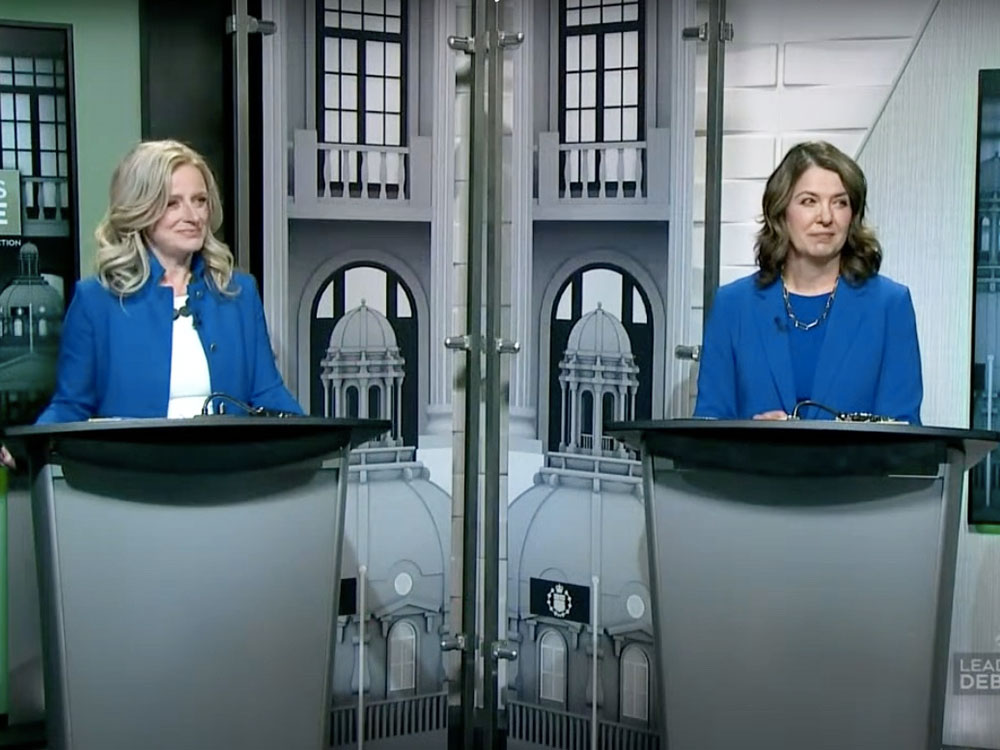Imagine you live in rural Alberta and have a heart attack.
But you hesitate to reach out for help because there is immense stigma and shame about heart attacks. People who have them are seen as flawed, making bad choices.
And even if you do reach out, there are no services to help you, or to prevent others from having heart attacks.
In fact, no one acknowledges heart attacks even happen in rural Alberta. They only happen in big cities.
It’s absurd to imagine this scenario. So why do we believe that drug poisonings only happen in cities?
Albertans are ready to elect a new government Monday. The parties have released their platforms and proposed policies, including on the big issues of the drug poisoning crisis and related issues of housing, public safety and criminal justice.
Yet a glance across party platforms reveals a glaring omission. Most have proposed drug policies that only target Alberta’s two largest cities, Edmonton and Calgary. There are virtually no proposed policies that address drug poisoning in small towns and rural communities, where more than 15 per cent of Albertans live.
Between the incumbent United Conservative Party’s controversial Compassionate Intervention Act that proposes people who use drugs be involuntarily admitted to primarily urban-based treatment programs and the Alberta NDP’s proposed investment in outreach teams specifically in downtown Edmonton and Calgary, the drug poisoning crisis in rural communities has been rendered virtually invisible.
Even parties with proposed policies that do not target specific locations, such as the Alberta Party’s proposal to support existing supervised consumption sites, implies that drug use only exists in urban areas. Currently, there are no supervised consumption sites in rural Alberta — only in urban centres.
The invisibility of people who use drugs in rural Alberta isn’t new. In fact, the province’s approach is to seemingly avoid acknowledging this population altogether. In 2022 alone, over 1,600 Albertans died from the toxic drug supply, yet it’s not clear how many of these people resided in rural areas due to the province’s data reporting structure. There is no publicly available community-level data as the province only reports drug-related deaths by grouping them with the nearest city.
Even within some cities, neighbourhood-level reporting has been masked, including in Edmonton as identified in a July 2022 article in The Tyee. Limited community-level data makes it incredibly difficult to implement effective policies and programs to support the needs of Albertans.
This knowledge gap is telling based on the province’s recent decision-making. It was announced earlier this year that Turning Point, a well respected non-profit harm reduction organization that provides outreach services to rural central Alberta, will be converted to a mobile site operated by Alberta Health Services, shocking clients and service providers who have formed strong and trusting relationships over the past 30 years.
The government said a similar change in 2020 had been successful. Yet, a 2023 study on the Lethbridge supervised consumption site closure suggests this change has worsened harms for people using drugs, including increased “overdoses” or drug poisoning events.
The province’s seemingly rash decision-making, which contradicts the needs and wants of people who use drugs, is not surprising considering the limited community-level data and in light of recent comments from Danielle Smith’s chief of staff Marshall Smith. “Engaging people who are addicted to drugs, and who are actively high, in a policy conversation about what to do about the addiction problem, makes about as much sense as engaging a stakeholder of drunk drivers to write new traffic laws — it’s just nonsensical,” Smith said.
And perhaps that is the crux of the issue. People who use drugs, their families and allies in rural Alberta have been vocal about the challenges they face, as well as the power and strength of community connection. Yet lack of political will and action suggests their stories and experiences have been largely ignored. That is not to say that people who use drugs in urban Alberta have it any easier — there is still stigma and discrimination abound, and the toxic drug supply continues to claim lives every day.
However, the lack of investment in rural services, geographic isolation from urban services, and stigma of substance use have formed the perfect storm. One in which people who use drugs in rural Alberta are made twice invisible.
A comprehensive person-centred provincewide strategy is needed to ensure the drug poisoning crisis is addressed in a way that supports the health of all Albertans, regardless of location.
And if their stories won’t be listened to, perhaps their votes will. ![]()
Read more: Health, Rights + Justice, Politics, Alberta
















Tyee Commenting Guidelines
Comments that violate guidelines risk being deleted, and violations may result in a temporary or permanent user ban. Maintain the spirit of good conversation to stay in the discussion and be patient with moderators. Comments are reviewed regularly but not in real time.
Do:
Do not: